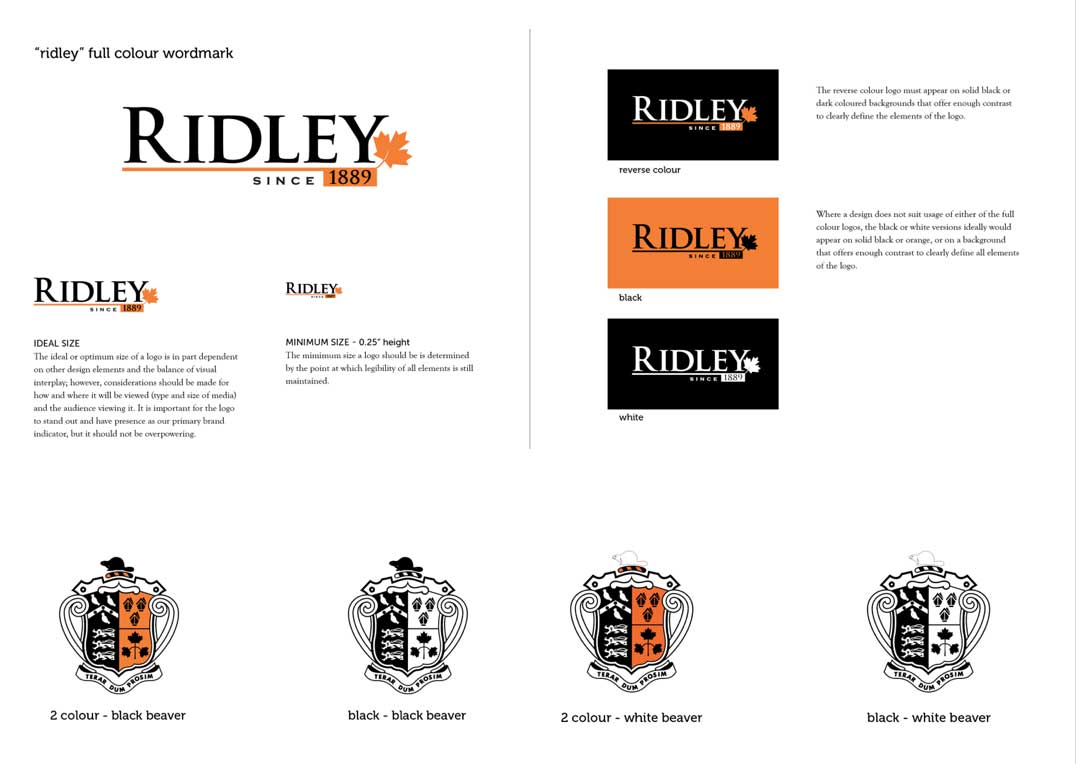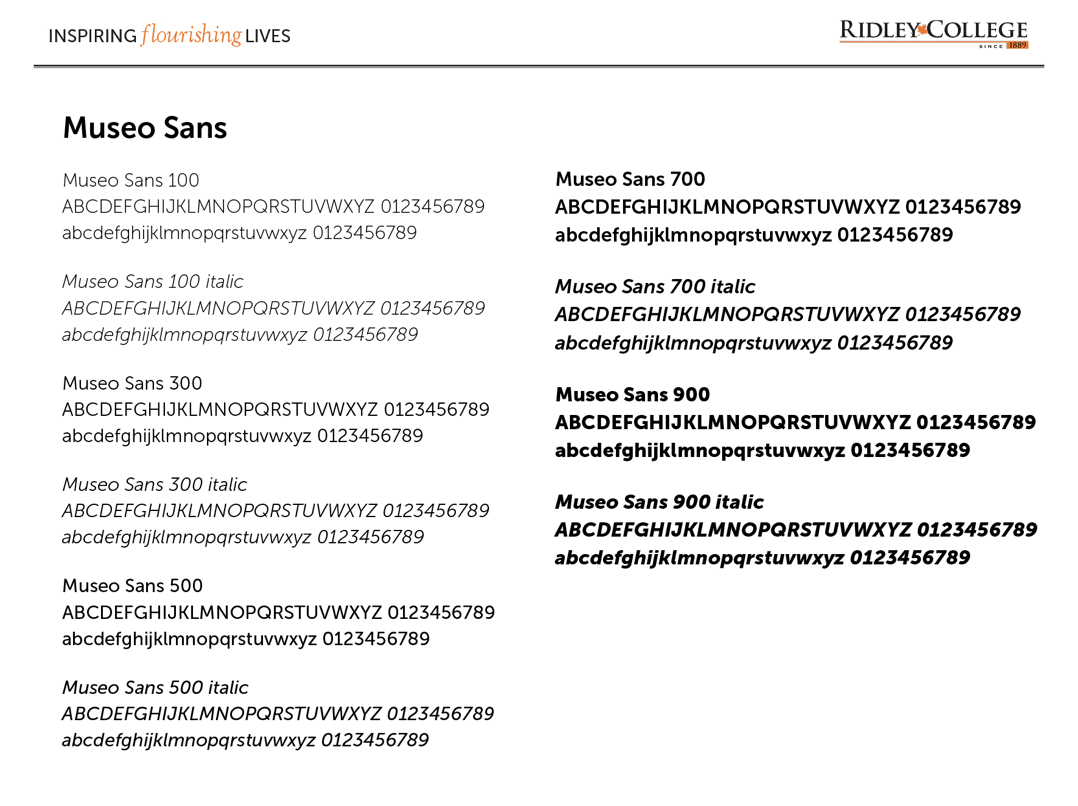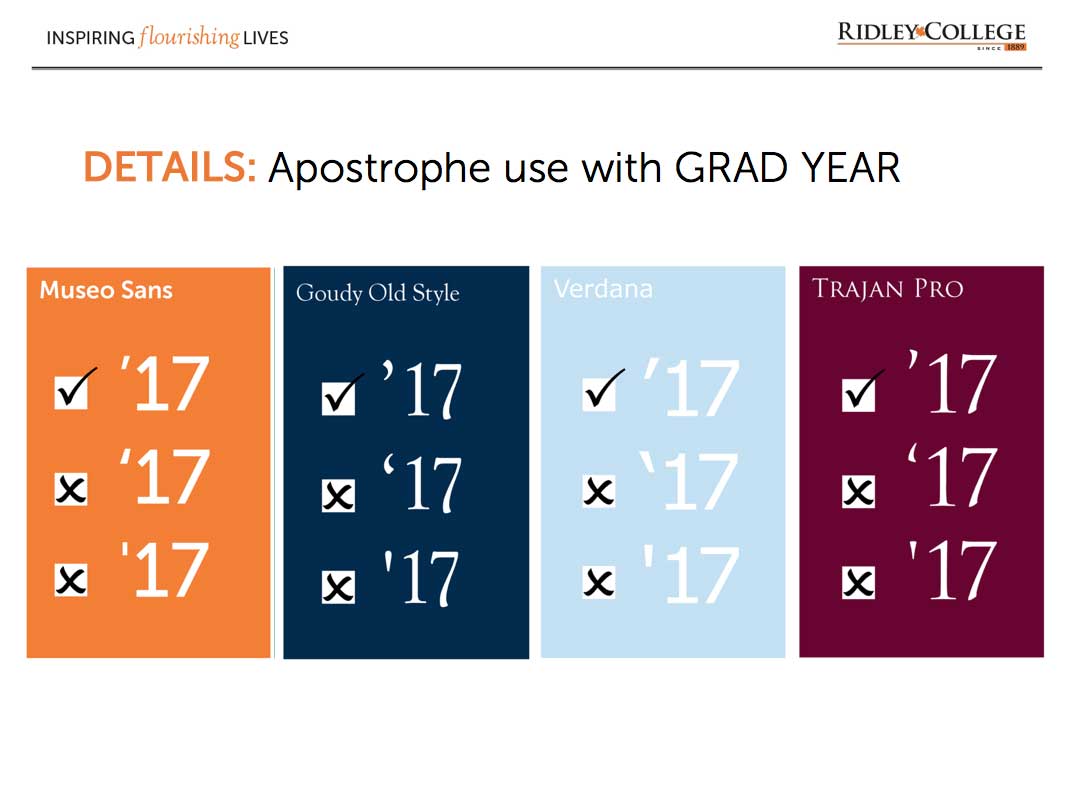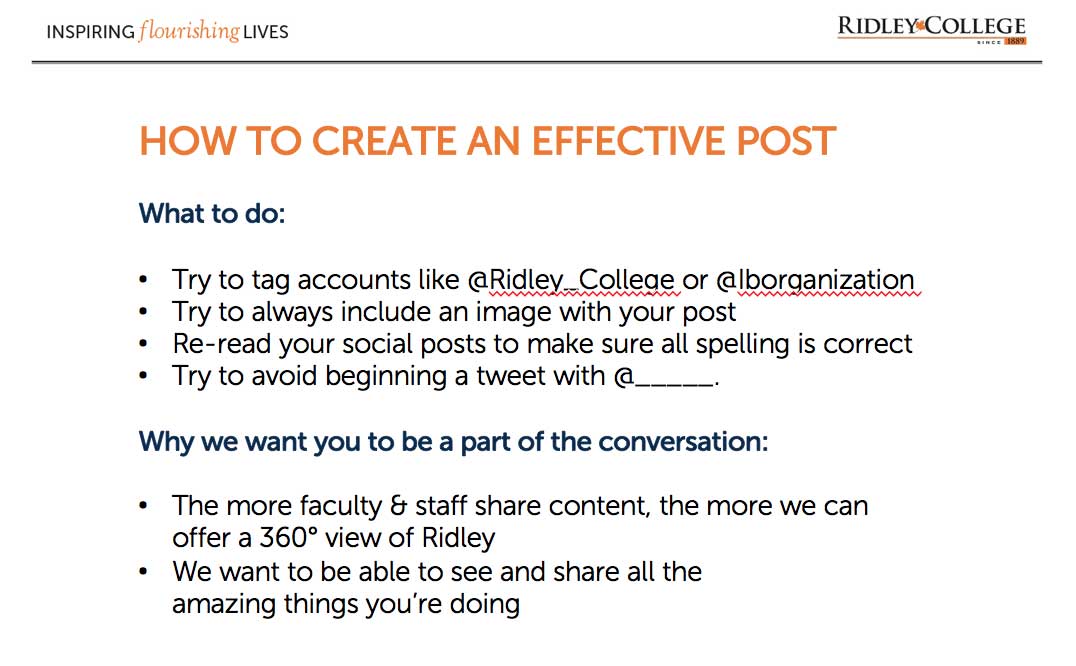How To Conduct A "Brand Camp" For Internal Engagement
/Independent school brands are unique; they’ve typically evolved over decades or centuries, and pre-date the era of modern school marketing. What’s more, your internal brand champions, comprised of faculty and staff, may not have any experience or understanding on the topic. For these reasons and more, defining your institution’s brand identity—and engaging internal stakeholders in the process—can be a perplexing task.
At Ridley College, we’ve taken a unique approach to our brand strategy by developing short, accessible workshops known as Brand Camp. These ‘edu-tainment’ style sessions dissect our school’s brand and provide basic training on topics such as logo usage, font families and how to best promote the school on social media. Friendly-competitions and “fun facts” throughout Brand Camp help to empower participants and are meant to create a memorable experience that generates buzz.
Here are 9 tips for developing your own brand engagement workshops:
establish your school’s brand guide before initiating an engagement strategy.
1. Establish Your Brand Guide First
It is important to establish your school’s brand guide before initiating an engagement strategy. This intricate guideline, which details your institution’s visual and written identities, will act as the basis for your workshops and is also a necessary reference point for your Communications staff and external vendors.
When I took post at Ridley in 2015, I was faced with the challenge and exciting opportunity to audit, refine and document a 128-year-old brand identity—that had been marinating in over a century of history and culture. Over the course of 18 months and with the undeniable efforts of dedicated team members (Michelle Scrivener and Mackenzie Fowler), Ridley completed its first-ever brand guide. This communications bible is filled with the intricacies of the school’s logos, crests, fonts, colour breakdowns, photographic styling, brand attributes and more.
2. Secure Support from Senior Leadership
As with any school-wide initiative, it is vital to have support and buy-in of your senior leadership team.
To their credit, Ridley’s Headmaster, Senior Leadership Team and Board of Governors were not only included in the creation of our brand guide, but have been supporters of the brand strategy since its infancy. Their endorsement has helped to emphasize the importance of brand consistency and has shaped school culture.
3. Brand Your Brand Strategy
Brainstorm a simple, memorable name for your brand workshops and strategy. The name should evoke a sense of fun and help make unfamiliar territory approachable.
Early on in the process of developing our brand guide it became evident that much of the language the Communications Department used was foreign. At the same time, certain words resonated with faculty and staff. This signaled the need for a short, sticky name to give the strategy. Before we ever launched our first session, the name ‘Brand Camp’ had started to spread.
4. Tease Your Brand Workshops
Informing your internal audience of your efforts with regards to branding will organically prime them and encourage them to take interest.
During the phase within which the brand guide was being developed, Ridley’s Communications Department began to have conversations with internal audiences relating to the brand, logos, font, etc. Simply opening up a dialogue about the shape-shifting nature of our brand orange, as an example, resulted in select employees asking how they could contribute to our efforts—thank you to these early adopters!
5. Consider the Audience
To whom you roll out your brand engagement strategy is equally as important as how you roll it out. Start with those who are on the front lines of branding with an objective to empower them.
The first groups to attend Ridley’s Brand Camp were Senior Leadership, our administrators/executive assistants as well as the Advancement Office. These groups were ideal to present to first because they either work with the brand (e.g. through their use of letterhead, PowerPoints, etc.), or are influencers who present our brand in a one-to-many format (e.g. at a school fair or alumni reception). The secondary group that will be invited to Brand Camp will be faculty.
6. Consider the Format
You can’t expect those outside the Communications Department to fully understand the PMS, CMYK, HEX breakdowns of your colour palette, so you should distill and simplify brand basics for your workshops.
Ridley’s graphic designer, meticulously assembled the brand guide, has also created a shorter, less technical variation for distribution at Brand Camp. The early success of Brand Camp is in part due to the accessibility of the content presented. We have met as a department to carefully select subject-matter that will neither intimidate or bore participants. Each person is asked to bring his/her laptop so that we can collaboratively install fonts or update an e-signature.
7. Make it Fun & Memorable
Who hasn’t sat in that one workshop that was so dry we were looking at the clock five minutes in. To prevent this, be sure to energize your brand workshops with icebreakers, humour and friendly competitions.
When participants arrive to Brand Camp, their workstations are already equipped with two important things, reference materials and chocolate. After a brief introduction to the concept by our team of three (dressed in Ridley hockey jerseys) we kick off each workshop with an icebreaking activity. In our case, we use a ‘name that brand’ challenge. Throughout more informational portions of the workshop, we interject with fun facts or trivia questions about our brand for bonus prizes. Keep the tone light.
8. Make it a Series
It’s challenging to workshop your brand in approximately an hour, so consider making a series or a reoccurring lunch and learn series.
When Communications began to brainstorm what content to present, it was impossible to include all of our ideas. We’ve documented those that were initially cut and have intentions to launch Brand Camp lunch and learn sessions.
9. Ask & Look for Feedback
Request feedback (formally or informally) from participants to improve your workshop for future attendees, but also watch for signs that your employees are practicing what they’ve learned.
Early indicators suggest that attendees have not only been empowered by these mini conferences, but much to my delight, they have begun to implement what was learned. There is nothing more satisfying than stumbling upon a travel form that has been branded with proper logos and fonts.
UPDATE
10. Give out awards for the best social media brand ambassador of the month
For more brilliant ideas and brain food to make your job easier, sign up for our newsletter.










